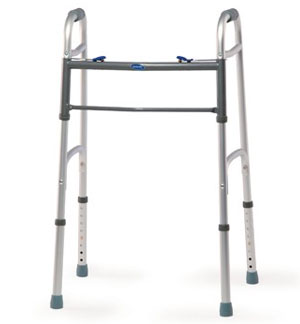Types of Equipment Used for Walking
The child’s posture should be as symmetrical as possible in his/her walking equipment. Whilst it may not always be possible to maintain an absolutely symmetrical posture, the therapist must ensure that the inevitable compromise between the benefits of walking and the position that can be achieved do not result in destructive postures which compromise the integrity of the child’s joints, muscles etc.
Sticks, Tripods etc |
Posture Control walkers |
Anterior support walkers |
Therapeutic |
Recreational |
|
Examples of commonly used walkers |
|
Quest |
Rollator |
Rifton Pacer |
David Hart |
Reasons for use |
More able child |
Gives child a “safety zone” e.g. in the playground. |
More able child with good cognitive ability
|
Adaptable / adjustable ++
|
Independent mobility for significantly affected child |
Problems associated with use |
|
Inclined to “scoot” |
May go off feet if don’t meet indicators |
May have adverse affect on posture if don’t meet indicators |
Unrealistic expectations of parents/carers |

